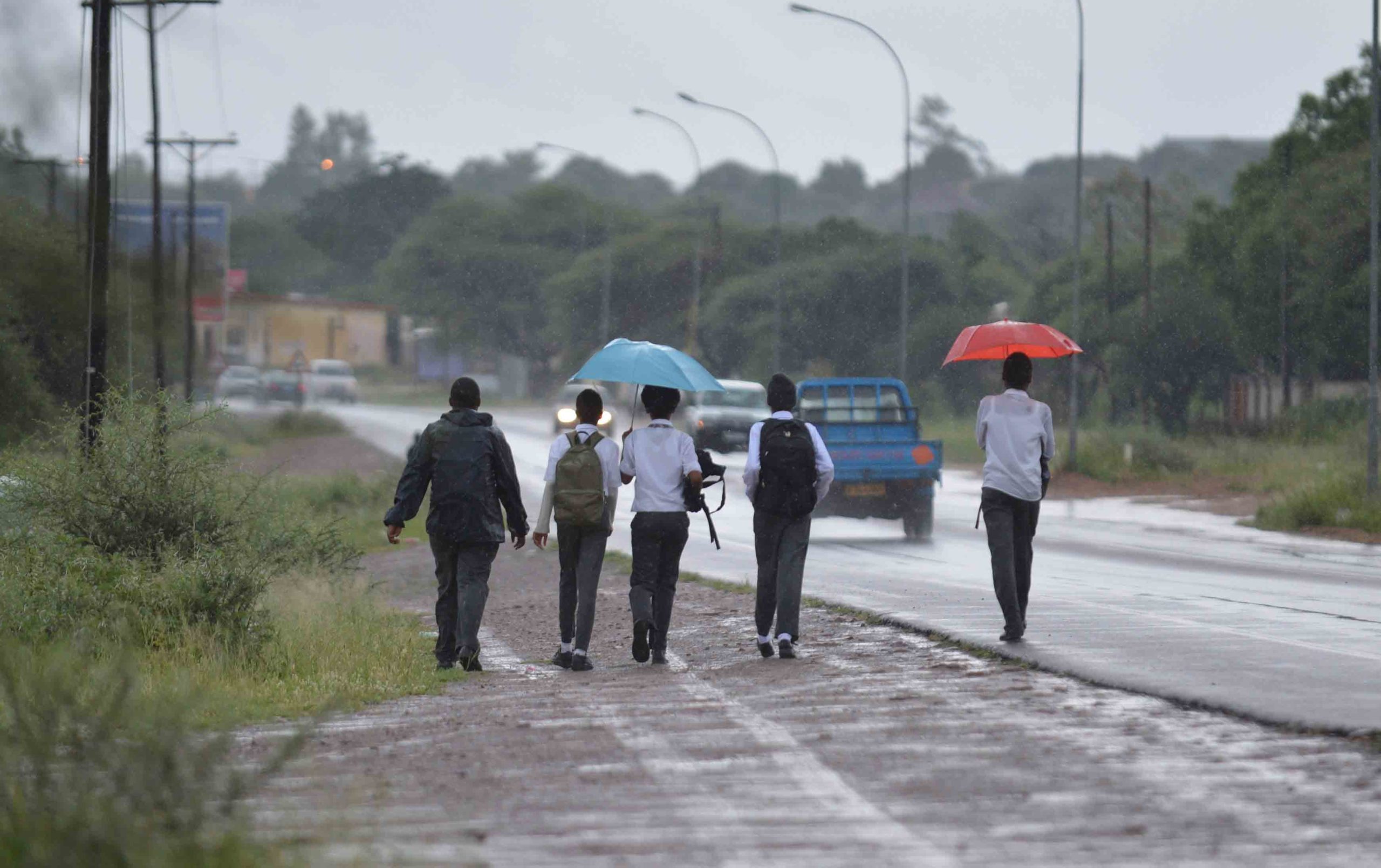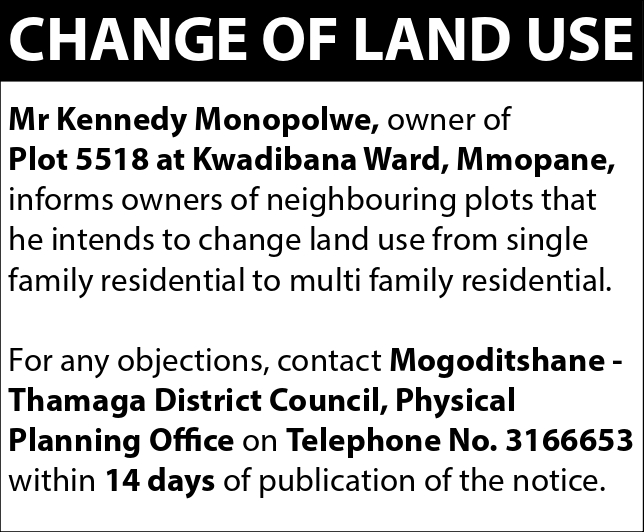A scathing report co-authored by the Government of Botswana, The World Bank Group and UNICEF has concluded that Botswana’s education system amounts to a monumental mess that places it among the worst in southern Africa, if not the world. Staff Writer KEABETSWE NEWEL reports
A scathing report on findings of research into the education system of Botswana was presented to the public at Avani Hotel last week. During the research, the government team was led jointly by the Ministry of Basic Education and the Ministry of Finance and Economic Development.
Titled “Public Expenditure Review (PER) of the Basic Education Sector in Botswana,” the report exposes core challenges facing Botswana’s education system that amount to a monumental mess.
OVERCROWDED CLASSROOMS
Data on class size suggests that the ratio of students to teachers in individual classrooms is somewhat low at primary school level and higher in secondary school grades. The study found that 33 percent of students in secondary schools were in classes of more than 40 students.
There are two reasons that interact to lead to large average class sizes at the secondary level. The first, according to the report, is the shortage of classrooms, which makes it difficult to have more streams even if there are enough teachers to for more classrooms. The second reason is large numbers of elective subjects, which means that each class has to be taught by many teachers, sometimes with classes split by the electives that pupils have chosen. The study shows that the number of streams (classes) in secondary schools is quite closely matched to their enrollment, with the school’s enrollment having to rise on average by almost 39 pupils before a stream is added.
“Only 23 percent of schools had average stream sizes of 32 or smaller, and because these were the smaller schools, their enrollment was 10 percent of the total. Thus 90 percent of secondary school pupils were, at least for their core subjects, in classes of more than 32. Indeed, 33 percent of pupils were in class sizes of more than 40,” the report reads in part.
DISMAL PERFORMANCE IN NATIONAL EXAMINATIONS
The report notes that internal examination performance has also been stagnant in recent years. Decision-making in the education system is fragmented. Responsibilities are divided among many ministries, and as a result there is a lack of clear prioritisation within education spending.
Despite the favourable fiscal situation, the study points to significant shortages of textbooks and school infrastructure, including classrooms and specialist rooms for teaching (e.g. science subjects). In primary schools, the classroom backlog is 15 percent of the current stock.
Insufficient teacher training is a key factor in understanding the country’s low performance on student assessments. Teacher preparation, according to the study, is now the responsibility of the regional education offices, which are constrained by lack of funds and subject specialists. There is also a very large over-supply of teachers in subject areas such as English, Setswana, History and Geography, to the detriment of the rest of the subjects.
There are 826 schools offering primary education and primary enrolment constitutes around two-thirds of total primary and secondary enrolment (excluding pre-primary and special education). The report observes that despite its name, the Primary School Leaving Examination (PSLE), written at the end of Standard 7 by all pupils, no longer acts as a high stakes examination to determine who may enter secondary school. All students, irrespective of their performance, are admitted to secondary school (Form 1) after completion of Standard 7. This, according to the report, means that even the failed students are allowed to progress. The 2019 PSLE overall performance indicates that the proportion of candidates obtaining credit grades (Grade C or better) went up by 1.55 percent from 72.78 percent in 2018 to 74.33 percent in 2019.
The same applies to students who progress from Junior Certificate to Senior Certificate where Grades D and E are considered as pass grades by government and are allowed to progress. According to the Botswana Examinations Council (BEC), Grade A to Grade C are credit passes. In 2019, only 35.3 percent of students passed JC with credit. Grades D and E were acquired by 49.3 percent of students while 14.4 percent were ungraded.
It emerges that around one-third of all school students are in secondary schools, which normally relates to Forms 1 to 5. In 2017 this number was just below 175,000. Secondary education is offered in 211 Junior secondary schools, 33 senior secondary schools and 50 unified schools offering both junior and senior secondary education. At the end of Form 3, students must sit for the Junior Certificate Examination (JC), which determines admission to Form 4.
BOTSWANA AMONG WORST PERFORMERS REGIONALLY
According to the report, Botswana has participated in three rounds of the international assessment programme carried out by the Southern and Eastern African Consortium for Monitoring Educational Quality (SACMEQ). It says Botswana performed poorly in international educational assessments. “Despite being one of the richest and most developed economies in the SACMEQ programme, Botswana’s performance is near the average level in the region,” the report says. “In SACMEQ III (2011), the Botswana averages in Reading and Maths were 535 and 521 points respectively (against the survey mean across all countries of 500 points).”
The report says the SACMEQ III results suggest some improvement in overall performance since the scores were equated against the 2002 scores, and therefore the average Grade 6 student in 2007 had higher levels of achievement than the average student in 2002. Nevertheless, given the country’s level of development, the results suggest that student achievement levels are far behind systemic expectations.
Based on Pre-Progress in International Reading Literacy Study (PIRLS) (Grade 4, testing literacy in home language), PIRLS (Grade 5 literacy) and the Trends in International Mathematics and Science Study (TIMSS) (Grade 4 numeracy, Grade 9 Maths and Science), Botswana is among the worst performing participants (though not many African and poor developing countries participate). The weak performance in Pre-PIRLS indicates that learning deficits start early. This strengthens the case for improving Early Childhood Care and Education and pre-primary education and paying much attention to teaching basic reading, writing and arithmetic well in the early school years.
In 2011, according to the report, Botswana was the only African country that participated in the PIRLS/TIMSS joint survey of Reading, Mathematics, and Science. These tests are usually carried out in Grade 4, but because of previous weak performance in other tests, Botswana students wrote these tests in Grade 6. The report shows the results for a sample of the 34 countries that participated, in terms of performance at two levels, the first being the high international benchmark (550 points) and the second the low international benchmark (400 points, where 500 is again the reference mean and 100 the standard deviation).
“Botswana’s performance is far below levels that are commonly seen in most developed and even middle-income countries. Whereas more than 90 percent of Grade 4 children in many countries perform above the low international benchmark, only 37 percent of Grade 6 children in Botswana achieve this; and while more than 20 percent of Grade 4 children in the leading countries perform above the high international benchmark in all three subjects, only 3 percent of Botswana’s Grade 6 children perform above the international benchmarks in all three subjects.
FRAGMENTED DECISION MAKING
Until 2017/18, education in Botswana fell under the Ministry of Education and Skills Development (MoESD). In 2017/18, the ministry’s functions were rearranged, with two new ministries, the Ministry of Basic Education (MoBE) and the Ministry of Tertiary Education, Research and Technology taking on most of the functions of the former ministry, except for those related to skills development, which were shifted to the Ministry of Employment, Labour and Skills Development (MELSD). One concern with the new reorganisation, according to the study findings, is that it could potentially further increase fragmentation.
The report says even before the recent re-organisation and changes in functions, there was already some fragmentation. For example, it notes, many of the functions that MoESD fulfilled at the secondary level were fulfilled by the Ministry of Local Government and Rural Development (MLGRD) in primary schools within its own budget and without clear classification of what part of its spending was on education. This includes MLGRD’s spending on building and maintenance of primary schools and classrooms, as well as providing primary schools with furniture, stationery, school meals and, until recently, textbooks.
Consistent with the recent re-organisation, resources that arrive at schools flow from MoBE via regional offices. Education is also supported on a parallel basis through MLGRD, which continues to support primary education through funding to district councils. Additional support for secondary education infrastructure is provided through the Ministry of Infrastructure and Housing Development (MIHD). This furthers the fragmented nature of education spending even within the basic education (primary and secondary) sequence.
There are three main mechanisms in place for monitoring use of funds. First, schools and regions are audited by an Internal Audit Unit based in the Ministry of Finance and Economic Development. MoBE also is held accountable to a parliamentary committee (Public Accounts Committee – PAC) on an annual basis. Further, all government funding is conducted through the Government Accounting and Budgeting System (GABS). This computer-based system is built with different authority levels that are able to see all allocations and expenditures performed using government funds at any level.
The split responsibilities in primary education between MoBE and MLGRD leads to fragmentation of decision-making. This fragmentation makes it extremely difficult to plan fiscal expenditure for the school education system as a whole and impossible to compare spending on primary and secondary infrastructure provision.
It also gives rise to inefficiencies, for instance, in the maintenance of the list of construction firms, building inspections and building standards. There is a strong case to be made for streamlining the whole process of school and classroom construction, from the planning and budgeting process to the organisation and oversight of such building.




